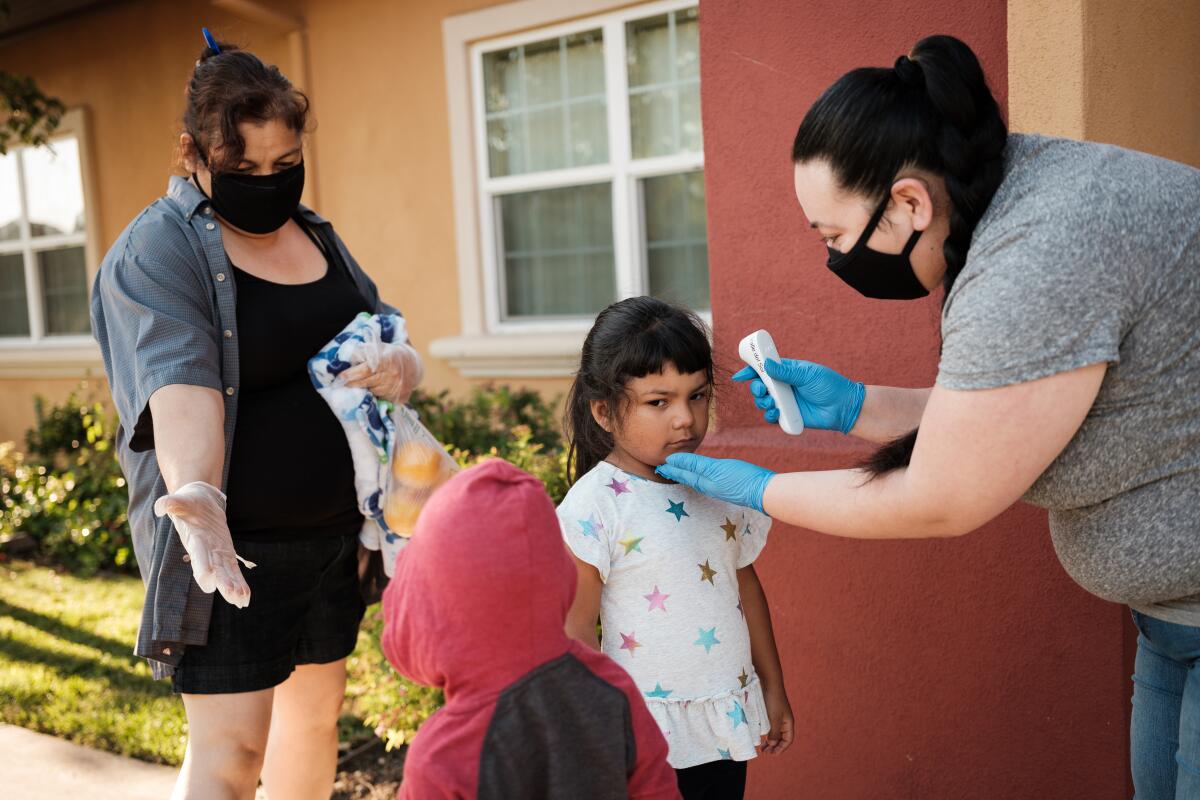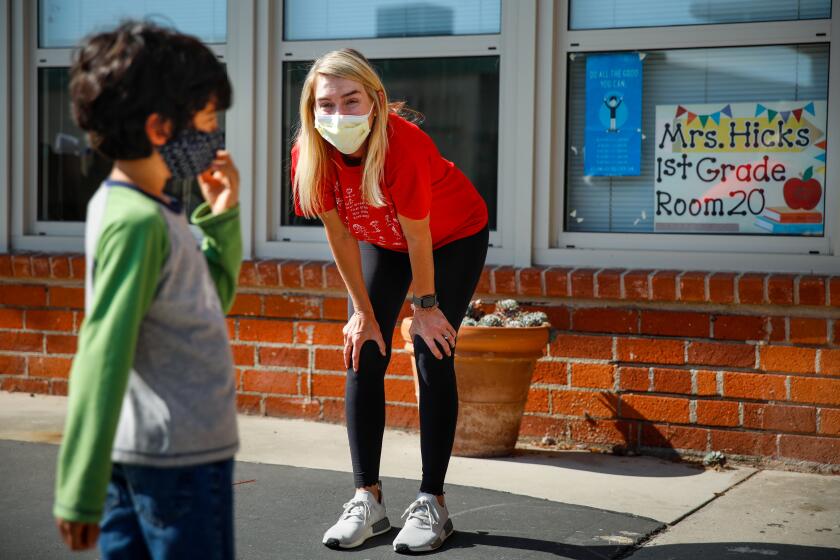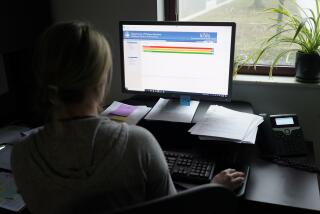COVID-19 racial disparities extend to kids, U.S. reports show

- Share via
Racial disparities in the the U.S. coronavirus epidemic extend to children, according to two sobering reports released Friday by the Centers for Disease Control and Prevention.
One of the studies found that Latino children were hospitalized with COVID-19 at a rate eight times higher than white kids and that Black children were hospitalized at a rate five times higher.
The second study examined cases of multisystem inflammatory syndrome in children, or MIS-C. It found that nearly three-quarters of the children with the rare syndrome were either Latino or Black, well above their representation in the general population.
The coronavirus has exposed racial fractures in the U.S. healthcare system as Black, Hispanic and Native Americans have been hospitalized and killed by COVID-19 at far higher rates than other groups.
Meanwhile, the impact of the virus on children has become a political issue. President Trump and some other administration officials have been pushing schools to reopen, a step that would allow more parents to return to work and the economy to pick up.
On Wednesday, Facebook deleted a post by Trump for violating its policy against spreading misinformation about the coronavirus. The post featured a link to a Fox News video in which Trump says children are “virtually immune” to the virus.
The vast majority of coronavirus cases and deaths have been in adults, and kids are considered less likely to have serious symptoms when they’re infected. Of the nearly 5 million cases reported in the U.S. as of Wednesday, about 265,000, or 5%, were in children 17 and younger. Of the more than 156,000 deaths reported at that time, 77 were children — about 0.05%.
But the new CDC reports are a “gut punch” reminder that some children are getting seriously ill and dying, said Carrie Henning-Smith, a University of Minnesota researcher who focuses on health disparities.
“It’s clear from these studies, and from other emerging research, that kids are not immune,” she said. ”Kids can pass along COVID, and they can also suffer the effects of it.”
She said the studies should give community leaders pause about opening schools.
“We need to be really, really careful. We are potentially talking about putting children in unsafe situations,” Henning-Smith said.
Educators, health officials and scientists are still working to understand what it will take to make schools safe in the midst of the COVID-19 pandemic.
The first study is based on cases reported by hospitals in 14 states. Researchers counted 576 hospitalizations of kids from March 1 through July 25 of this year. The study did not have detailed medical information on all of them, but at least 12 were sick enough to need a machine to help them breathe. One died.
The hospitalization rate for Latino children was about 16.4 per 100,000, and the rate for Black children was 10.5 per 100,000. For white kids, by contrast, the rate was 2.1 per 100,000.
As with adults, many of the hospitalized children had existing health problems, including obesity, chronic lung conditions and — in the case of infants — preterm birth. The one reported death was a child with several underlying conditions, the study said.
A number of possible factors could explain the disparities, said Dr. Cyrus Shahpar, who oversees epidemic prevention efforts for a not-for-profit data and advocacy organization called Resolve to Save Lives.
Larger percentages of Latino and Black kids may go to hospital emergency rooms when they’re sick, which could be driven by difficulty getting into — or paying for — doctor’s office visits. That lack of access to regular healthcare could lead to more severe illness, he suggested.
COVID-19 claims the lives of Black and Latino Americans earlier than it does for whites. Nonwhite victims are typically a decade younger than whites, the CDC says.
The second CDC study focused on 570 kids diagnosed with MIS-C, a rare condition linked to eight deaths.
Some children with the syndrome have symptoms resembling Kawasaki disease, another rare childhood condition that can cause swelling and heart problems. Other symptoms of MIS-C include fever, abdominal pain, vomiting, diarrhea, neck pain, rash, bloodshot eyes or feeling extra tired.
In the study, many of the patients had severe complications, including heart problems and kidney damage. Nearly two-thirds of the children were admitted to intensive care units, and the average ICU stay was five days.
The CDC report included illnesses that began from mid-February to mid-July. Forty states reported cases.
The report found that 13% of kids with the condition were white, while more than 40% were Latino and 33% were Black. Overall, about half of U.S. children are white, around 25% Hispanic and about 14% are Black, according to population estimates.
Scientists are still learning about the condition. Experts say genetics has nothing to do with why some racial and ethnic groups are more likely to be infected by the virus, get seriously sick from it or die from it. But it’s not yet clear if genetics play a role in the childhood inflammation condition, Shahpar said.







